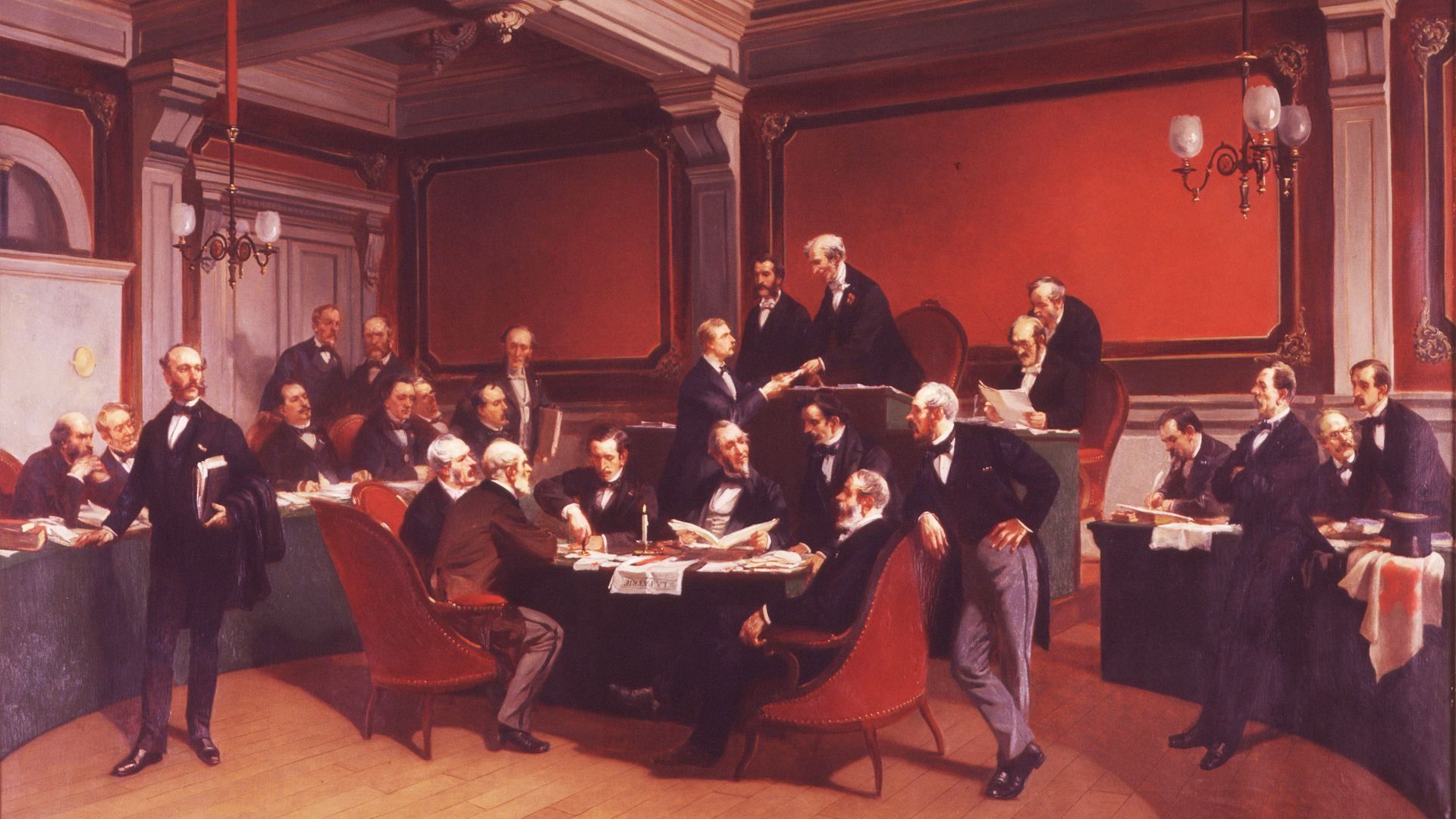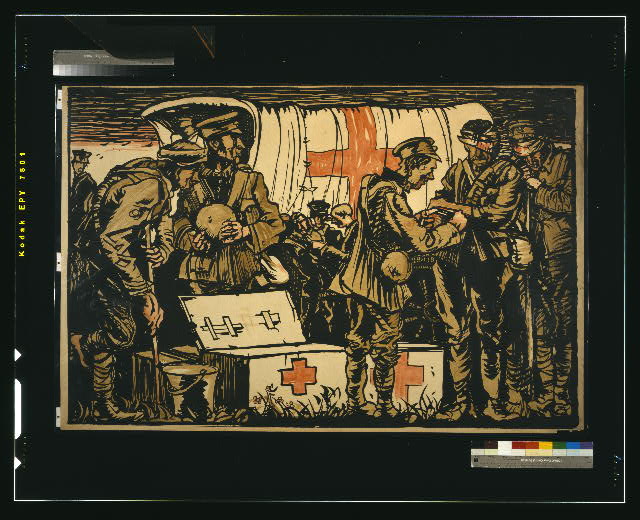First Geneva Convention Establishes Red Cross Aid

Delegates meeting at the Geneva Convention of 1864, where the Red Cross was established.
What Happened?
The First Geneva Convention was adopted on August 22, 1864, at the urging of Jean-Henri Dunant, a Swiss humanitarian horrified by the neglect of wounded soldiers on battlefields. His advocacy led twelve nations to sign a treaty establishing principles of care and neutrality in war.
The treaty guaranteed that all wounded soldiers would receive aid regardless of nationality. It also established the neutrality and protection of medical personnel, hospitals, and aid convoys, marked by the distinctive red cross emblem on a white background—the reverse of the Swiss flag.
The International Committee of the Red Cross (ICRC) was founded out of this agreement, expanding globally in the decades that followed. In 1881, Clara Barton and Adolphus Solomons co-founded the American Red Cross, extending the humanitarian mission to disaster relief in the United States.
While later treaties in 1906, 1929, and 1949 expanded its scope, the 1864 convention set the precedent that even in war there must be rules. Its legacy endures today whenever medics and aid workers operate under the Red Cross emblem in conflict zones worldwide.
Jean-Henri Dunant received the very first Nobel Peace Prize in 1901, recognizing his role in reshaping how nations treat war’s most vulnerable victims. The Geneva Convention marked a shift from war as unrestrained violence to war bound by humanitarian law.
Why It Matters
The First Geneva Convention was a milestone in global history: it established that compassion and dignity should not vanish in war. By protecting the wounded and those who care for them, it created the foundation for humanitarian law and the Red Cross movement. Its legacy is a reminder that even in the darkest times, empathy and shared humanity can—and must—guide our actions.
?
How did Jean-Henri Dunant’s experiences at war inspire the Geneva Convention?
Why was the red cross emblem chosen, and what does it symbolize?
What role did Clara Barton play in bringing the Red Cross to America?
How have the Geneva Conventions evolved since 1864?
In what ways do modern wars challenge the principles of the Geneva Conventions?
Dig Deeper
International humanitarian law (IHL) limits suffering caused by war. The Geneva Conventions draw clear lines between combatants and civilians, shaping modern laws of war.
Related

Fascism: Power, Propaganda, and the Fall of Democracy
Fascism emerged from the ruins of World War I and found its foothold in fear, nationalism, and economic despair. It promised unity, but delivered control, conformity, and catastrophe.

The War on Terror: A New Era of U.S. Power
After the September 11th attacks, the United States didn't just declare war on terrorism—it redefined national security, global alliances, and the limits of civil liberties.

Magna Carta
On May 12, 1215, a gang of angry English barons forced King John into a corner—and launched a document that would echo across centuries. It wasn’t democracy, but it was a dent in the divine right of kings.
Further Reading
Stay curious!
